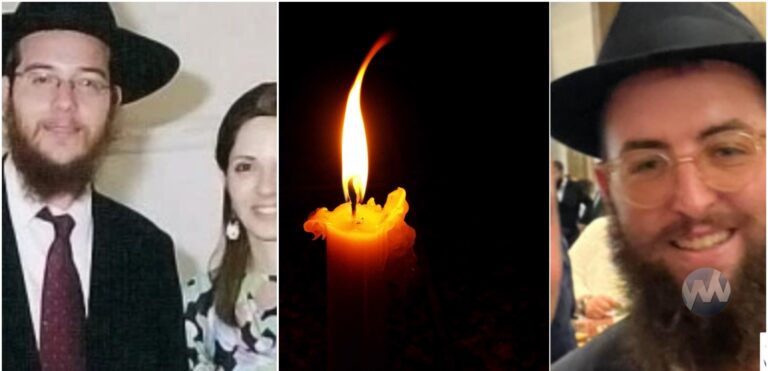
[Halachically Speaking appears on YWN weekly, Tuesdays and Thursdays]
Written by Rabbi Moishe Dovid Lebovits of KOF-K Kosher Supervisio
The custom is that prior to Yom Kippur a chicken is taken as a kapara for a person.[1] The punishment that was supposed to go on a person for his sins should instead go onto the chicken.[2] The poskim say that when one turns the chicken over his head it is a time to think about teshuva,[3] and when one sees the chicken being shechted he should think about the four misos.
What Should One Use For Kaparos?
The poskim say that a chicken should be used since it is called a gever and a person is called a gever.[4] However, some seforim say the reason a chicken is used is based on kabbalah.[5] If one does not have a chicken then he may take a fish[6] or he can use money.[7] People often take money even if they can get chickens. Some poskim question whether this practice is permitted.[8] One should not look specifically for a purely white chicken as this is going in the way of the goyim.[9]
The Type Of Chicken
A male should take a male chicken (a rooster), and a female a female chicken (a hen).[10] If there is a situation whereby a male took a female chicken or vice versa the kaparos is valid, and there is no need to repeat the kaparos.[11]
A Chicken Per Person
Some poskim say that one chicken may be used for a couple of people.[12] However, one should ideally use one chicken per person, if this is financially possible.[13] Some kaparos centers use the same chicken many times over and this practice should be avoided.[14]
Holding The Chicken For Other People
One should try to hold his own chicken when doing kaparos.[15] If one does not wish to do so then it is permitted for someone else to hold the chicken for him, however, he should first do his own personal kaparos.[16] If for some reason he held the chicken for someone else first, he may still do his own kaparos second.[17]
When To Do Kaparos?
The preferred time to do kaparos is before alos hashachar on Erev Yom Kippur,[18] nonetheless this time is not practical. In earlier days people would bring their chicken to the neighborhood shochet and there would be no concern of the shochet not doing the shechita properly, therefore, thekaparos was performed on Erev Yom Kippur. Today, this is not the case and some say that since so many chickens are killed in one period of time the correct time to do kaparos is before Erev Yom Kippur. This way, one will avoid the “mad rush” and won’t have the concern of the shechita not being done properly.[19] The poskim say that one may do kaparos the entire Aseres Yemei Teshuva.[20] Some seforim say if one did not do kaparosbefore Yom Kippur it may be done on Hoshana Rabbah.[21]
Pregnant Woman
There are two minhagim concerning kaparos on behalf of a pregnant woman. Many poskim are of the opinion that the correct procedure is to take a rooster and two hens.[22] Others say one should take one rooster and one hen.[23] The minhag seems to be that one should take one rooster and one hen.[24] A woman who finds out she is pregnant and it is before forty days, does not do a kapara for the fetus.[25] (One should take a chicken and do a kapara for a young child even if he is too young to understand what is going on).[26]
The Procedure
One should say the nusach of Bnei Adom. Each time the chicken is turned over the head the words of “ze chalifasi” are recited. The chicken should go around the head three times.[27] If the chicken is being held by someone else for you then the person holding the chicken should say the nusach.[28]
Paying For The Kaparos
One may not use his masser money to pay for the kapara chickens; it has to be from your own money.[29]
A Woman Who Is A Niddah
A husband may perform the kaparos for his wife even if she is a niddah, however, one must be careful that there is no touching.[30] One may not perform kaparos for a woman who is not his relative.[31]
Covering The Blood
After the kaparos is finished one should wait to perform the mitzvah of covering the blood.[32] The shochet should appoint you as a messenger to perform this mitvah.[33] The minhag is even if it is your first time doing the mitzvah, the beracha of shehechiyanu is not recited.[34] One should take the dirt etc. in his hand, make the beracha and then cover the blood.[35] The beracha recited is “boruch atah.. asher kedishunu.. kiso hadambeufer.”[36] If one did not say ufer altogether, or he said kiso dam without saying hadam or be’ufer he was yotzei b’dieved.[37] A child under bar mitzvah should not cover the blood.[38]
[1] Refer to Piskei Rosh Yoma 8:23, Darchei Moshe 605:2, Rama 605:1, Magen Avraham 1, Be’er Heitiv 1, Levush, Kaf Ha’chaim 8, Chai Adom 144:4, Aruch Ha’shulchan 1-3,Lekutei Maharich 3:page 80b, Matei Ephraim 2, Yalkut Yosef 5:page 75:4, see Bais Yosef, Shulchan Aruch 1 who says not to do kaparos. Refer to Minhag Yisroel Torah 6:pages 135-137, Hilchos Chag B’Chag 21:8:footnote 21, Asei Lechu Rav 3:20.
[2] Mishnah Berurah 2.
[3] Chai Adom ibid, Matei Ephraim 605:5, Kaf Ha’chaim 10, Ben Ish Chai V’yeilich 1:2, Yalkut Yosef 5:page 75:8, Minhag Yisroel Torah 605:1.
[4] Tur, Prisha 1, Levush, Kaf Ha’chaim 1, Lekutei Maharich ibid. Refer to Tur 605 for an additional reason for using a chicken. If one normally does kaparos with a chicken he should not switch his minhag and do it with money. (Orchos Rabbeinu 2:page 196:7). Some say if a cholah cannot do kaparos with chickens then he would need hataras nedarimto perform it with something else. (Orchos Rabbeinu ibid:5).
[5] Eliyahu Rabbah 5, see Shulchan Aruch Harav 1.
[6] Levush, Magen Avraham 2, Ateres Zekanim 1, Mishnah Berurah 4, Kaf Ha’chaim 21. The poskim point out that if one does kaparos with money he should do it on ErevYom Kippur.
[7] Kaf Ha’chaim 11. Refer to Hilchos Chag B’Chag 21:14:footnote 42 in depth.
[8] Moadim V’zemanim 1:52.
[9] Refer to Be’er Heitiv 3, Eliyahu Rabbah 9, Kaf Ha’chaim 24, Aruch Ha’shulchan 4, Mishnah Berurah 4, Matei Ephraim 2, Katzei Hamatei 5, See Levush.
[10] Rama, Levush, Matei Ephraim 2, Eishel Avraham Butchatcha.
[11] Eishel Avraham Butchatcha.
[12] Refer to Magen Avraham 2, Pri Chadash, Chai Adom ibid, Mekor Ha’chaim, Kaf Ha’chaim 23.
[13] Refer to Pri Megdim Eishel Avraham 2, Be’er Heitiv 2, Machtzis Ha’shekel, Mekor Chaim, Kaf Ha’chaim 23, Mishnah Berurah 2, Matei Ephraim 2, Yalkut Yosef ibid,Mikadesh Yisroel 251.
[14] Natei Gavriel 10:12:footnote 18 in depth (new), Mikadesh Yisroel ibid.
[15] Mekor Chaim, Chai Adom ibid, Matei Ephraim 6.
[16] Mekor Chaim, Kaf Ha’chaim 16.
[17] Horav Yisroel Belsky Shlita, see Matei Ephraim 605:6.
[18] Refer to Magen Avraham 1, Be’er Heitiv ibid, Ateres Zekanim 1, Kaf Ha’chaim 5, Mishnah Berurah 1, Aruch Ha’shulchan 4, Matei Ephraim 3, Mikadesh Yisroel 250. Some did it after Shacharis (Eliyahu Rabbah 1, Mishnah Berurah 1). See Orchos Rabbeinu ibid 1. Others did it after selichos (Mekor Chaim). Others did it on Erev RoshHashanah as well (Kaf Ha’chaim 2).
[19] Pri Megadim Eishel Avraham 1, Mishnah Berurah 2, Aruch Ha’shulchan 5, Yechavey Da’as 2:71. Refer to Katzei Hamatei 8.
[20] Horav Yisroel Belsky Shlita, see Pri Megadim ibid, Mishnah Berurah 2, Natei Gavriel 10:1:1 in depth (new), Yechavey Da’as ibid, Elef Hamugen 2, Minhag Yisroel Torahpage 116. Refer to Aruch Ha’shulchan 5.
[21] Refer to Natei Gavriel 10:7:footnote 11 (new).
[22] Pri Megadim Eishel Avraham 2, Eliyahu Rabbah 7, Shulchan Aruch Harav 3, Matei Ephraim 2, Mishnah Berurah 2. Refer to Da’as Torah 605:1, Moadim V’zemanim1:52, Sharei Halacha V’minhag 2:page 215. Some places do not let women do kaparos and this is wrong (Katzei Hamatei 605:3).
[23] Rama ibid, Chai Adom ibid, Mishnah Berurah 3, Aruch Ha’shulchan 3, see Matei Ephraim 2.
[24] Horav Yisroel Belsky Shlita.
[25] Horav Yisroel Belsky Shlita, see Otzer Habris 1:2:2 quoting the opinion of Rav Elyashiv Shlita. Refer to Moadim V’zemanim 1:52:footnote 1, Mikadesh Yisroel 253,Sheilas Rav 1:12:4. Refer to Shevet Ha’kehusi 2:198 who maintains that one should do kaparos for a fetus under forty days old. If one did kaparos for a fetus a couple of days before Yom Kippur and now the baby was born before Yom Kippur there is no need to perform another kapara (Shevet Ha’kehusi 2:199).
[26] Horav Yisroel Belsky Shlita.
[27] Refer to Levush, Mishnah Berurah 581:3, Aruch Ha’shulchan 2,4, Matei Ephraim 3, Lekutei Maharich 33:page 81. Some say to recite leshem lichud prior to kaparos (Kaf Ha’chaim 9).
[28] Refer to Siddurim.
[29] Machtzis Ha’shekel, Pri Megadim Eishel Avraham 4, Mekor Chaim, Be’er Heitiv 4, Kaf Ha’chaim 28, Mishnah Berurah 6.
[30] Horav Yisroel Belsky Shlita, see Suga B’shoshanim 38:1, Teharas Ha’bayis 2:12:12:footnote 12. Others are stringent with this. Refer to Mikadesh Yisroel 252, Teharas Ha’bayis ibid
[31] Mekor Chaim.
[32] Refer to Gemorah Chullin 83a, Shulchan Aruch Y.D. 28.
[33] Matei Ephraim 605:8, Elef Hamugen 26, Aruch Ha’shulchan 16, see Halichos Shlomo Moadim 2:3:7, Orchos Rabbeinu 2:page 196:4. Refer to Katzei Hamatei 18.
[34] Horav Yisroel Belsky Shlita, see Shach Y.D. 28:5, Pri Megadim Sisfei Da’as 5, Pri Chadash 5, Darchei Teshuva 28, Kaf Ha’chaim 15, Aruch Ha’shulchan 10, Be’er Heitiv2, Elef Hamugen 605:32, Mitzvos Hashechita 28:4:footnote 17 in depth. Refer to Rama 2, Tevuas Shor 4, Matei Ephraim 605:8, who argue. See Darchei Teshuva 20. Those who have the custom to make a sheheciyanu should make it before making the beracha on covering of the blood. (Elef Hamugen 32).
[35] Refer to Shulchan Aruch ibid 2, Pri Megadim M.Z. 3, Simlah Chadasha 28:3, Elef Hamugen 605:27-28.
[36] Shulchan Aruch ibid 2, Shach 29, Taz 3, Ben Ish Chai V’yelilech 1:3, Kaf Ha’chaim 10-11. Refer to Aruch Ha’shulchan 28:9.
[37] Kaf Ha’chaim 12, see ibid 9.
[38] Maharam Shik Y.D. 37:pages 12-13.










